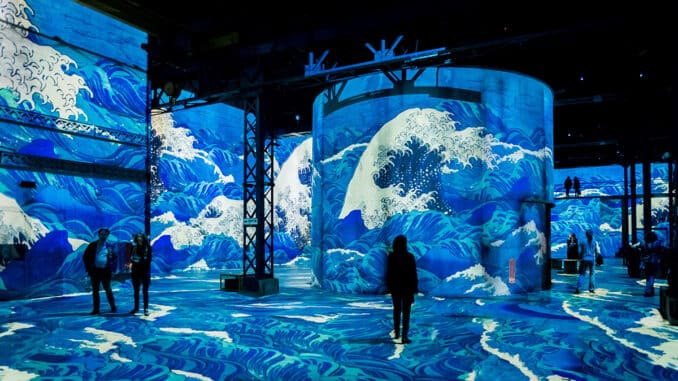
As we approach 2025, digital art and technology are set to revolutionize the way we experience creativity. Advances in immersive technologies are reshaping art venues, festivals, and urban spaces, making art more interactive, sensory, and engaging. In this post, we’ll explore how these changes are transforming the art world and what the future holds.
Immersive art spaces and digital experiences
Immersive digital art venues have become increasingly popular, offering audiences a chance to engage with art in new ways. Places like the Atelier des Lumières in Paris and the Coventry Immersive Art Gallery are using technologies such as projection mapping, virtual reality (VR), and augmented reality (AR) to create fully immersive environments. These venues blur the line between the artwork and the viewer, making the experience more interactive and engaging.
Projection mapping is a key technology in this transformation. It involves projecting images onto surfaces, turning buildings or other objects into dynamic, animated art pieces. This technique is also becoming a staple at festivals, where it merges digital art with the surrounding architecture. In the near future, expect more events where augmented reality glasses allow users to interact with art on a personal level, enhancing the overall experience.
The rise of interactive art
Another major trend is the shift toward interactive art. Rather than simply observing a piece of art, viewers are becoming active participants. Through sensors or digital platforms, audiences can change the visuals, contribute to the work, or even experience art in a new way using haptic feedback—tactile sensations that make the art feel more real.
This move toward interactivity makes art more inclusive, allowing everyone to be part of the creative process. It also adds a layer of personalization that makes the art experience unique for each viewer.
Digital art in public spaces and festivals
Digital art is also making its way into public spaces and festivals. Cities are beginning to experiment with integrating art into architecture, creating urban spaces that are constantly changing and engaging. For example, light displays, digital projections, and interactive installations are transforming parks and streets into ever-evolving art galleries. These innovations are turning everyday spaces into exciting places where digital and physical worlds merge.
As festivals continue to embrace these technologies, we can expect larger-scale projections and immersive environments that will transform the way we experience public art. These experiences will not only engage the eyes and ears but will also use touch and movement, providing a truly multisensory encounter.
What’s next for digital art?
The future of digital art in 2025 is incredibly exciting. We’ll see even more blending of art and technology, with greater emphasis on interactive, multisensory experiences. As technology evolves, digital art will become more immersive, allowing everyone to engage with it in personal and meaningful ways. Whether it’s through interactive festivals, public installations, or immersive gallery experiences, the future of digital art is bright and full of possibilities.

Be the first to comment